Stanwick Lakes Bronze Age burial mound restoration reveals 4,500-year-old barrow
and live on Freeview channel 276
A Bronze Age burial mound for some of Northamptonshire’s earliest inhabitants is being uncovered and restored to preserve the site for future generations of county residents.
The £250,000 Heritage Lottery-funded project will see the Bronze Age ceremonial burial mound known as a ‘barrow’ protected from erosion and invasive plants and animals, for future generations.
Advertisement
Hide AdAdvertisement
Hide AdStanwick Lakes Heritage has been working with Historic England and a lead archaeologist to restore the barrow that had been hidden under weeds and brambles and buried into by rabbits.
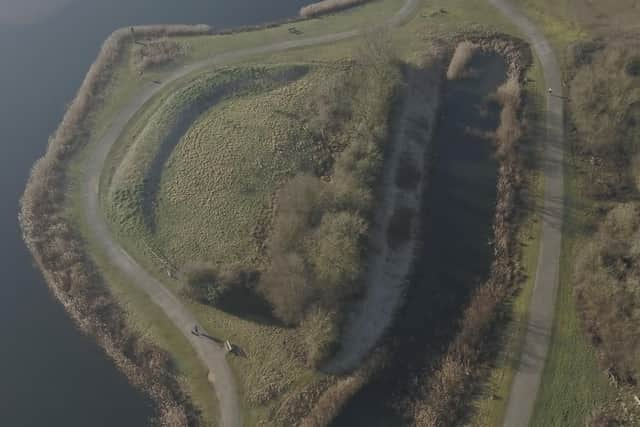

Heritage co-ordinator at Stanwick Lakes, Nadia Norman, said: “Our barrow tells an important story in the history of Stanwick Lakes and the Nene Valley. Several barrows dating from the Neolithic period to the Bronze Age were discovered here, and all together, they would have made for an impressive landscape. The valley was a special place for ancient settlers to remember their dead.”
The Nene Valley, as well as provided ancient peoples rich grazing pasture and a navigable river, has also been ideal for gravel extraction.
Before quarrying works started in the 1980s, a number of archaeological excavations on site unearthed a huge wealth of history dating from the Neolithic to Medieval becoming one of the largest archaeological sites ever excavated in the UK.
Advertisement
Hide AdAdvertisement
Hide AdDiscoveries included Neolithic tools, Bronze Age round barrows, an Iron Age settlement, a luxurious Roman villa and a late Saxon hamlet revealing human activity and communities on the Stanwick Lakes site for over 5,000 years.
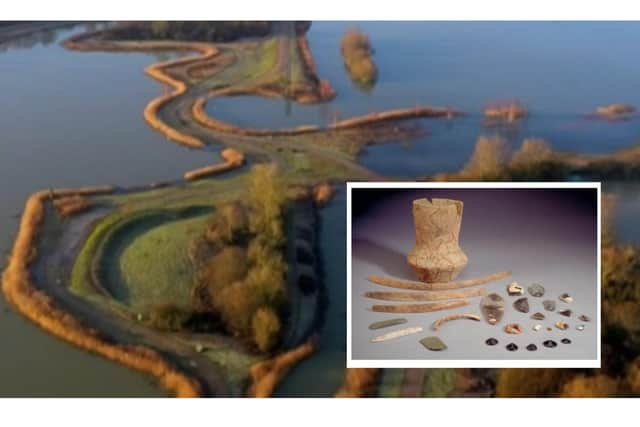

Ms Norman said: “Round Barrows are funerary monuments and continued to be seen as important and spiritual places well into the Iron Age and Roman periods in Britain.
“They were constructed as earthen or rubble mounds, sometimes with ditches, covering single or multiple burials. Barrows were often grouped near others as cemeteries, and often acted as a focus for burials in later periods.”
A number of barrows were excavated during the archaeological investigations prior to the quarrying one of which – Barrow One - was a ‘fairly intact’ burial complete with ‘exceptional’ grave goods and finds.
Advertisement
Hide AdAdvertisement
Hide AdFurther studies on the burial found the grave was for a high status man who died between 2,200BC and 1,920BC – he was a member of the so called Beaker People.
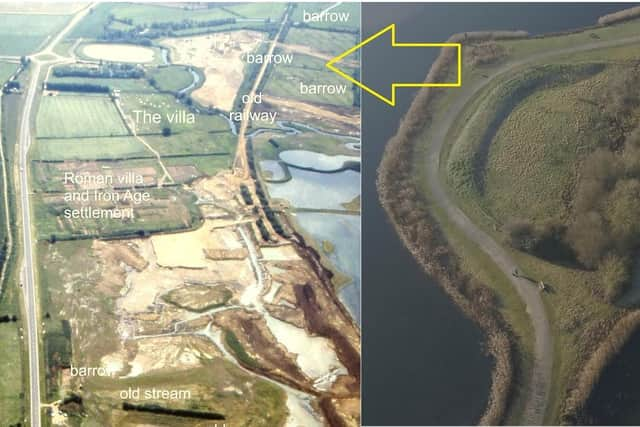

Grave goods included a flint dagger, an archery wrist guard, a crushed beaker and jet buttons.
Alongside him were buried seven subsequent cremation burials where a bronze dagger and knapped flint and arrow heads were also found.
After excavation Barrow One destroyed for gravel extraction but one barrow remained as a protected as a Scheduled Monument on site – protected by law and a soil bund to protect it from quarrying works.
Advertisement
Hide AdAdvertisement
Hide AdOver time, the barrow started to erode due to water levels and invasive undergrowth.
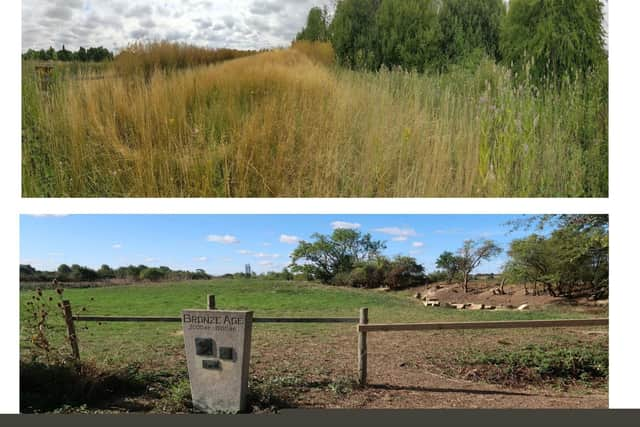

The barrow, a two-minute walk from the visitor centre and popular children’s play area, has gradually been cleared.
During summer 2022, volunteers and rangers cleared the barrow and nearby hedgerows of brambles and undergrowth in preparation for surveys prior to work to remove the soil bund from the outer edge.
Removal of the bund started in February 2023, led by archaeologist Derek Roberts from Pre-Develop Archaeology.
Advertisement
Hide AdAdvertisement
Hide AdAlthough a slice of the barrow was destroyed when the Rushden to Wellingborough railway line was built, the remainder will be protected from rabbit and water damage.
Ms Norman added: “This work has had a significant impact on the barrow site, and it is now completely visible from the pathways.
“This week, a geophysical survey was completed on the barrow, which will be able to give us up to date imagery of the barrow and surrounding area, very important for the ongoing preservation of such a historical significant monument.
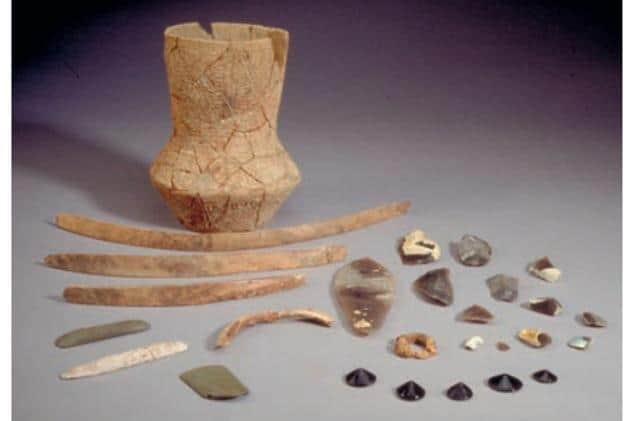

“The next steps will be to create a pathway around the barrow, making it even more accessible and visible, to shoring-up the edge nearest the railway ditch and mesh covering the mound to stop further erosion.
Advertisement
Hide AdAdvertisement
Hide Ad“It is important for us to be able to protect the barrow so that it can continue to be a part of the local landscape for generations to come, and to make the heritage and archaeology of this site accessible and visible for our communities.”
It is hoped that finds from Barrow One will be moved back to Stanwick Lakes to put on display in the near future